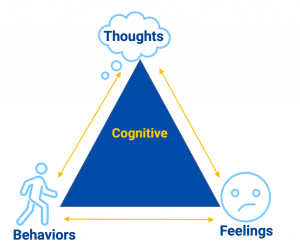How Does CBT Address Maladaptive Behaviors and Habits?
Cognitive behaviour therapy addresses maladaptive behaviors and habits — the thought patterns, emotions and actions that prevent people from functioning in the ways they want to. It is one of the most researched types of therapies and can be used to treat a variety of mental health conditions, such as anxiety, depression and phobias.
cognitive behavioural therapy is an active approach that helps patients identify and challenge irrational thoughts, which are often at the root of their problems. It is based on the idea that negative thinking is a habit, and like any other habit, it can be broken.

During sessions, which usually last about an hour and take place once or twice a week, therapists guide their clients to address their issues. They use a technique called ‘guided discovery’ (Padesky, 1993), in which they ask questions to help patients expand their thinking and become aware of underlying assumptions. They may also highlight alternative perspectives and explore implications. They may ask the patient to question their own beliefs, or use Socratic dialogue techniques to encourage them to think about why they believe what they believe.
CBT Address Maladaptive Behaviors and Habits
Therapists then work with their clients to identify problematic behaviors and figure out what is causing them. They use a worksheet called an ABC functional analysis, which allows them to break down the problem into different categories. They start by identifying predisposing factors, which are things that increase the likelihood of someone developing a particular problem (“The Problem”). Next they look at precipitating factors to discover what specific events or triggers lead to “The Problem.” Finally, they identify perpetuating factors, which are behaviors that sustain a person’s current pattern of behavior.
Once a therapist has identified the problematic thoughts and behaviors, they then teach the patient to correct them. They first help them to recognize the maladaptive thoughts and beliefs, which can be difficult for some people, especially those who struggle with introspection. This is a crucial step, because it allows the therapist to point out that many of the thoughts and feelings they have are irrational and harmful.
They then help the patient to identify and challenge these irrational thoughts, by encouraging them to ask themselves whether the evidence supports these ideas. They might also show them how to replace these unhelpful beliefs with more adaptive ones that can result in better coping and problem-solving skills.
A final goal is to help the patient practice these new skills in real-life situations. This is often done by using role play, such as imagining themselves in an anxiety-provoking situation and then talking about it with the therapist. Eventually, the patient should be able to handle these situations on their own without any support from the therapist.
It is important to know that CBT can be a tough process and that it takes time for changes to occur. You might feel discouraged if you don’t see results immediately, but this is normal and it is important to keep open communication with your therapist.